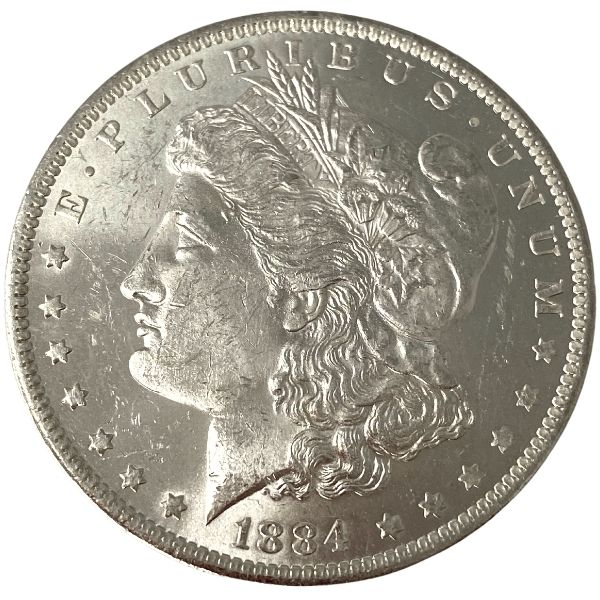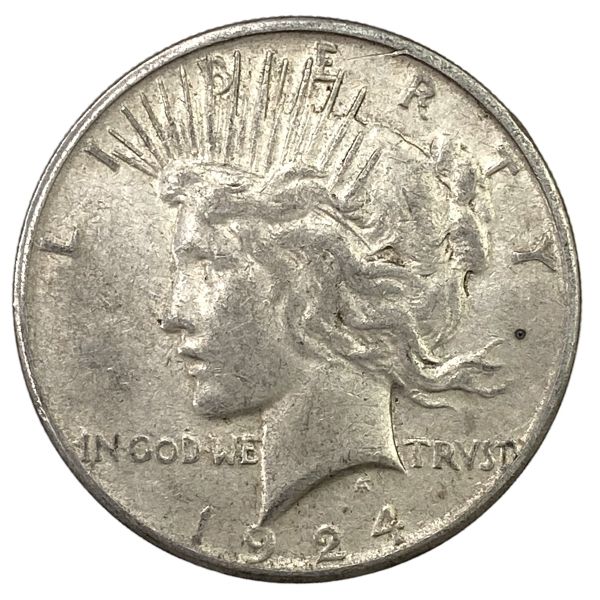Bullion Vs. Numismatic Silver – What’s the Best Way to Invest?

At a Glance:
-
- Silver Bullion is sold primarily for its metal content, but numismatic silver is rare and collectable.
- Investors on a limited budget tend to prefer the value and purity of bullion silver coins.
- Numismatic silver is a great way to diversify – and collecting rare coins can be fun and rewarding.
Bullion Vs. Numismatic Silver – What’s the Best Way to Stack?
To decide between silver bullion and numismatic silver, collectors need to know their preferences in an investment. Bullion coins are valued almost exclusively for their silver content, making them ideal for budget investors primarily concerned with getting the most “bang” for their buck. Numismatic coins shine for their collectability and play an important role in portfolio diversification, but they’re also saddled with high premiums and entry costs.
Ultimately, smart money is on a combination of these two investment classes. Because numismatic coins are valued for more than just their silver content, they can help investors diversify and remain profitable during any silver market.
This guide is all about numismatic vs. bullion silver. We’ll cover the key differences – and benefits – of these two unique investment types.
Comparing Numismatic and Bullion Silver Coins
“Numismatic” silver refers to silver coins that are bought and sold for more than their precious metal melt value. Melt value is the sum of money that a product is worth in silver content alone. In other words, how much would your silver coin be worth if you melted it down and sold the silver it contains?
Numismatic coins are generally valued for more than their melt value because of condition, rarity, or beauty. Many numismatic coins are rare collectibles, which mean that they were originally minted in extremely low numbers. These special coins are typically sold at higher premiums over spot price, but they also retain more value during bear silver markets. By contrast, bullion coins are almost exclusively bought and sold near melt value. Bullion coins also come with premiums. The cost of buying silver bullion per ounce, however, is considerably lower than buying the same amount of numismatic silver.
Still confused? Here’s a brief overview of the differences between bullion and numismatic silver:
| Silver Bullion | Numismatic Silver |
|---|---|
| High Purity (Usually >.999) | Purity Varies (Typically .90) |
| High Mintage Figures | Usually Rare and Collectable |
| Sold For Near Melt Value | Traded at a High Premium Over Melt |
| Modern, Highly Detailed Designs | Classic Designs – Less “Refined” |
Bullion Silver – Silver For Silver’s Sake
Simply put, silver bullion is silver for silver’s sake. When we say this, we mean that silver bullion coins are sold for very little more than their melt value in pure silver. Popular silver bullion coins include the American Silver Eagle, British Silver Britannia, and the Canadian Silver Maple Leaf Coin. These coins are sold at a premium, but this premium fee is generally only a fraction of what investors would pay for rare numismatic silver.
Although they’re not as collectable as numismatic coins, silver bullion coins can still be beautiful – and fun to stack. Bullion silver coins are great for investors who want to buy as much silver as they can for their money. Without having to pay additional premiums for rarity or condition, investors can put all their money toward what they really want – pure silver.
Numismatic Silver – Collectible or Rare Coins
Numismatic silver also has an important role to play in the modern precious metal portfolio, Rare and beautiful silver coins are called “numismatic” because they gain – and hold – value based on more than just silver melt value. Over time, numismatic coins may become more valuable, even if the spot price of silver decreases. As a result, numismatic coins are a good investment for stackers who want to shield their portfolios against the pitfalls of a difficult or volatile silver market. Numismatic silver is also great for investors who want to get into coin collecting. Some stackers collect modern bullion coins, but it’s much more common (and more fun!) to collect rare numismatic silver.

Is Bullion Better Than Numismatic Silver?
Bullion silver coins aren’t necessarily better than numismatic silver. Both silver coin categories offer their own advantages and disadvantages. Many investors stack silver using a combination of bullion and numismatic coins. A diversified silver portfolio can pay dividends, especially when the market takes a dive.
Pros and Cons of Buying Numismatic Silver Coins
To better illustrate the differences between bullion vs. numismatic silver, we’ll need to take a look at the pros and cons of each product type. The easiest way to compare the two main categories of silver coinage is to explore the pros and cons of numismatic silver.
Along the way, we’ll highlight a few important differences between investing in numismatic vs. bullion silver coins.
Advantages of Numismatic Silver
Numismatic silver refers to silver coins that are valued beyond their precious metal content, typically because of a coin’s rarity, condition, or collectability. There are four big advantages to buying numismatic silver coins:
- They’re beautiful
- They’re rare
- They’re collectable; and
- They’re great for diversifying a portfolio.
Let’s take a closer look at the main pros of buying and selling numismatic silver coins, rounds, and bars.
Beauty
Numismatic silver is beautiful. Is it more beautiful than modern bullion coinage? That depends on who you ask. Sure, some investors prefer the stunningly detailed look of a new American Silver Eagle. But for numismatic coin collectors, there’s nothing quite like the old style that characterized classic American silver coins.

Numismatic coins like the Morgan Silver Dollar never go out of style. In a sense, these coins tell the story of how coinage has evolved and changed over the course of 200+ years. The diversity of beauty in numismatic coinage is also hard to overstate. Even lowball coins, specimens that are so severely worn that they’re barely recognizable, are considered beautiful to some numismatic collectors.
Rarity
The key difference between bullion and numismatic coins is rarity. While some bullion coins become rare over time, these investments are almost always minted in high numbers. Numismatic coins usually feature similarly high mintages. Over time, though, the number of circulated coins in excellent condition decreases dramatically. This makes numismatic coins in near-BU condition extremely rare and valuable to collectors. Certain numismatic coins are exceptionally rare. During certain years, the U.S. Mint only produces a few thousand of a given coin. When we disregard the coins from this year that become damaged or heavily circulated, it becomes clear just how rare some near-BU numismatic coins can be.
Collectability
Because of their rarity, another benefit of numismatic silver is collectability. Numismatists love to collect a “full set” of some popular coin series. When certain coins in a given series are hard to find, they’re slapped with massive premiums. Collecting a full set of your favorite numismatic silver coin series can be incredibly fun and rewarding. That isn’t to say that bullion coins aren’t collectible. Some stackers prefer to make full sets of bullion coins like the Canadian Silver Maple, since these coins don’t come saddled with the excessive premiums you’ll find on numismatic coins.

Bonus Advantage: Portfolio Diversification
Perhaps the biggest advantage of adding numismatic coins to your portfolio is portfolio diversification. Investors who only stack silver bullion coins rely heavily on the volatile silver market in order to profit. If silver goes down in value, bullion coins like the American Silver Eagle quickly depreciate as well. Numismatic coins tend to appreciate in collectability over time – even when the silver market circles the drain.
Portfolio diversification is one reason why stackers should build their portfolios using a combination of numismatic and bullion silver coins. When you stack both types of coins, you set yourself up to remain somewhat profitable during nearly any market.
Cons to Investing in Numismatic Silver
Numismatic silver is both beautiful and collectible, but two main downsides force many investors to focus their efforts on bullion silver instead. The two biggest cons to investing in numismatic silver include:
- High premiums over spot price; and
- Low purity compared to silver bullion coins
Investors planning to put money into numismatic silver should take a closer look at each of these downsides.
Higher Premiums Over Spot Price
Because numismatic coins are valued for their rarity and collectability, they’re sold at high premiums compared to silver bullion coins. Remember: silver bullion is bought and sold for close to melt value. In other words, investors get more silver for their money when they choose to buy silver bullion coins.
These high premiums aren’t necessarily a bad thing. When investors sell numismatic coins, they’ll generally recoup some – if not all – of that coin’s premium. Still, numismatic silver is an expensive way to get into precious metal investing for stackers who are just starting out.
Lower Purity (Generally)
Most numismatic silver coins are minted with a purity of 90% or lower. There are exceptions to this rule, but not many. The low purity of circulated coins is one reason why governments began minting bullion coins. As investing in precious metals became more popular, it made sense for mints to start giving the people what they want.

Low purity is a dealbreaker for some investors – but not for others. Stackers concerned with buying as much pure silver as possible for their money should stick with silver bullion coins. Some collectors don’t mind the lower purity; low purity coins can still have fantastic value, especially if they’re rare or kept in great condition.
Bullion Vs. Numismatic Silver – Settling a Classic Investor Debate
Bullion vs. numismatic silver – which one is the better investment? This has been a debate among silver stackers for decades, and there’s no one right answer. Silver bullion is usually the best investment for people who want to maximize silver gains and minimize premiums. Numismatic silver coins, on the other hand, can help to diversify a precious metal portfolio with collectable value – but at a high premium cost.
As with everything in the world of investing, diversification is key. A well-rounded portfolio featuring both silver bullion and numismatic silver coins can help investors keep profitable during nearly any market climate.
You might also be interested in:
About The Author
Michael Roets
Michael Roets is a writer and journalist for Hero Bullion. His work explores precious metals news, guides, and commentary.
